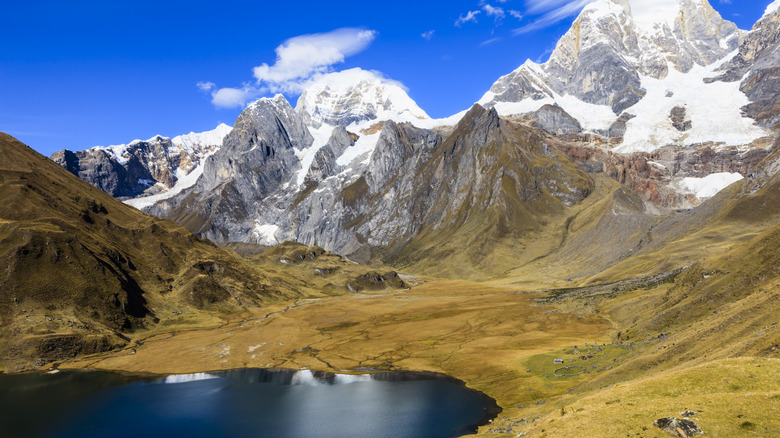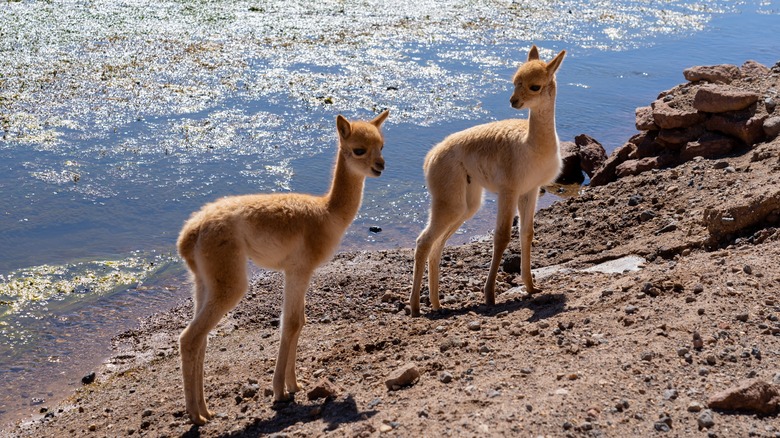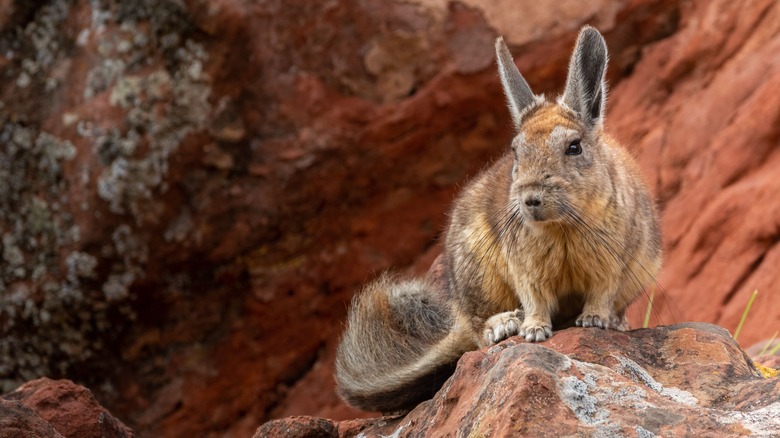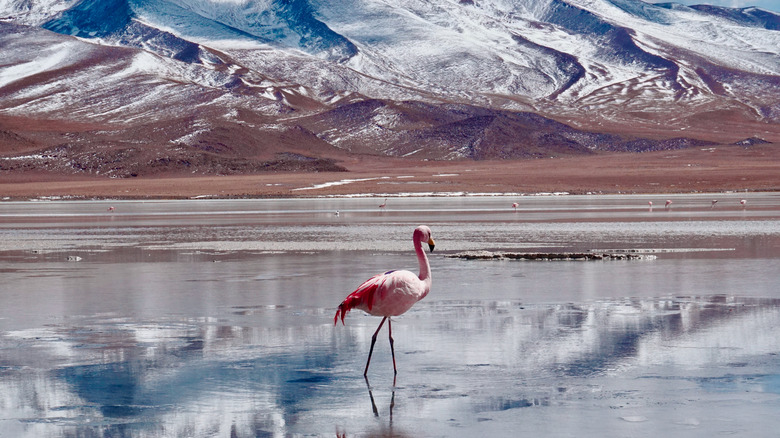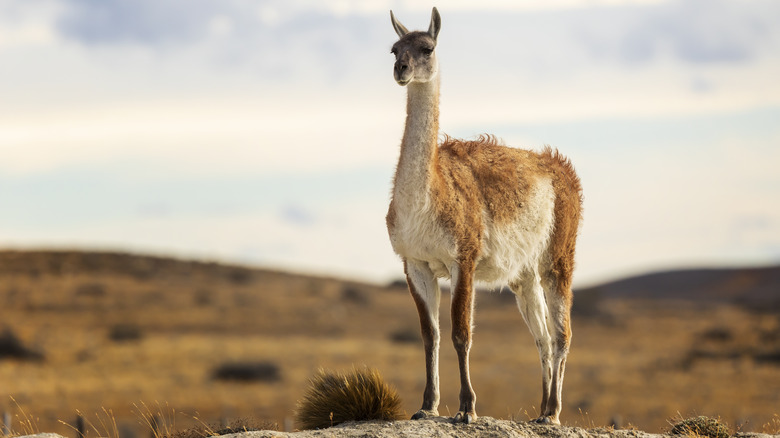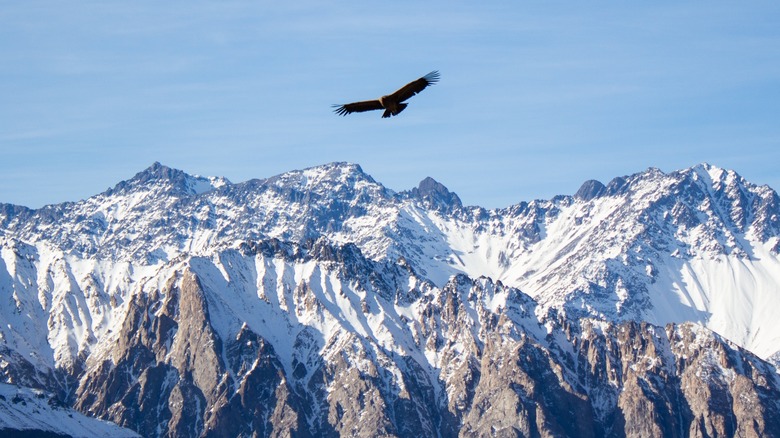5 Beautiful Animals You Might Be Lucky Enough To See While Adventuring In The Andes
Whether you're exploring rugged mountain trails, traversing high-altitude plateaus, or venturing into lush valleys, the Andes never fail to surprise and delight with the diversity of life that calls this majestic mountain range home. While there are indeed dangerous creatures to be wary of, akin to those found in the Smoky Mountains or the Amazon Rainforest, the Andes harbor a wealth of fascinating and unique wildlife waiting to be discovered.
From iconic species like the Andean condor to lesser-known gems such as the adorable viscacha, each of these creatures embodies the spirit of the Andes and adds a touch of wonder to any journey through this awe-inspiring landscape. For those with a keen eye and a sense of adventure, the Andes offer endless opportunities for wildlife encounters and exploration. So, pack your binoculars, lace up your hiking boots, and prepare to be amazed by the beauty and diversity of Andean wildlife. These are five beautiful animals you might be lucky enough to see whilst adventuring in the Andes.
Vicuña
The vicuña, a graceful creature native to the Andes Mountains, holds a special place within the camelid family, which includes llamas and alpacas. Despite being the smallest member of this family, its slender build and soft coat distinguish it. Revered for its exceptionally fine fleece, the vicuña boasts one of the world's most sought-after natural fibers. Garments crafted from vicuña wool are highly prized for their unmatched softness, warmth, and luxurious feel, embodying a timeless elegance that transcends mere fashion trends. However, centuries of overhunting have decimated vicuña populations, pushing them dangerously close to extinction. Each animal produces only a small amount of wool, further accentuating its rarity and value, traditionally reserved for society's highest echelons.
These charming creatures primarily inhabit the high-altitude regions of Peru, Bolivia, Chile, and Argentina, thriving in elevations exceeding 12,000 feet on the Andean plateau (via Britannica). Their physiology has adapted remarkably to endure the challenges of such extreme environments, including coping with low oxygen levels and abrupt temperature fluctuations.
Vicuñas, known for their shy and elusive nature, prefer the vast, remote expanses of the Andes, far from human activity. Spotting a herd of vicuñas galloping in the distance is a rare and rewarding sight, a testament to their ability to navigate their rugged habitats with grace and agility.
Viscacha
The viscacha belongs to the chinchilla family, characterized by its fluffy fur, long tail, and distinctive rabbit-like appearance. These cute animals inhabit the rocky slopes and grassy plains of the Andes Mountains, where they seek refuge in crags and crevices to escape predators and harsh weather conditions. These types of terrains are often inaccessible to humans, making a sighting rare. On top of that, viscachas are incredibly cautious of predators, further adding to the challenge of spotting them. Viscachas play an integral role in Andean ecosystems as herbivores, feeding on a variety of grasses, herbs, and shrubs. Their foraging behavior helps maintain vegetation balance and contributes to the overall health of their habitat.
Notable about Viscachas is that they are one of a few rodents that socialize using vocal calls. Unlike many other rodents that primarily rely on scent marking or visual cues to interact with each other, viscachas have developed a sophisticated vocal repertoire to maintain social cohesion and coordinate activities.
Flamingo
The Andean flamingo (Phoenicoparrus andinus) stands out as a unique and fascinating member of the flamingo family. While it shares some traits with its cousins on other continents, including long legs and a curved bill, the Andean flamingo is notably smaller and more delicate in appearance. Its plumage ranges from pale pink to coral-orange, with darker markings on its wings and back, creating a striking contrast against its white underbelly. Unlike the vibrant pink hues of other flamingo species, the Andean flamingos' coloration is more subdued, subtly mirroring the ethereal beauty of its lofty habitat.
Andean flamingos occupy a range of habitats, from salt flats to saline lakes and even marshes, all of which provide essential breeding and feeding grounds for these birds. The Laguna Colorada in Bolivia, the Salar de Atacama in Chile, and the Laguna de Chaxa in Chile's Atacama Desert are known to host populations of Andean flamingos. Guided birdwatching tours and visits to designated birdwatching sites offer opportunities to witness the grace and splendor of these majestic birds in their natural element.
Guanaco
The guanaco is a majestic inhabitant of the Andes. It possesses long legs and dons a graceful posture, which cuts a striking figure against the backdrop of the Andean landscape. They are equipped to live on terrain that reaches 14,000 feet above sea level, meaning only the most daring adventurers get a chance to see them in their natural environments.
Guanacos are social animals, forming herds composed of females, offspring, and a dominant male. Forming herds is an evolutionary protective measure against predators like pumas and Andean foxes and facilitates social interactions such as mating rituals and grooming.
Beyond being related to the vicuña, guanaco fur is also just as prized and highly sought after in traditional textile production. It comes in a range of colors and has evolved to withstand the extreme temperatures and harsh winds of the creature's alpine home. This has led to poaching and competition for hunting of guanacos. As a result, conservation efforts are underway to protect these iconic animals.
Condor
The Andean condor is a master of the skies, boasting a wingspan that can exceed 10 feet making it one of the largest birds of prey on the planet. Its distinctive black plumage contrasts sharply with the white feathers on its neck and wings, giving it an imposing appearance while soaring the skies. Condors are scavengers, maintaining the ecological balance of their habitats by feeding on carrion and cleaning up carcasses. Their keen eyesight and acute sense of smell allow them to locate food from great distances.
Since these large birds are more interested in the deceased than the living, they can be hard to spot. Even in designated viewing areas, they make only occasional appearances. However, if you're lucky to see one their wingspan and markings make this unmistakable.
The condor is revered in the mythology of many Andean cultures, regarded as a sacred and mystical creature. It is associated with power and wisdom and is said to represent the link between the Earth and the spirit world.
